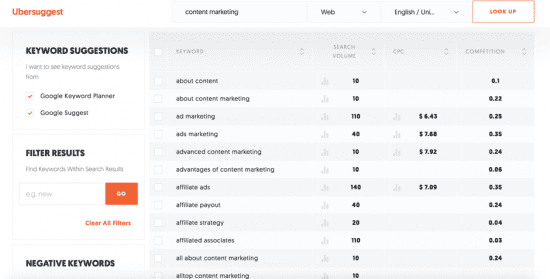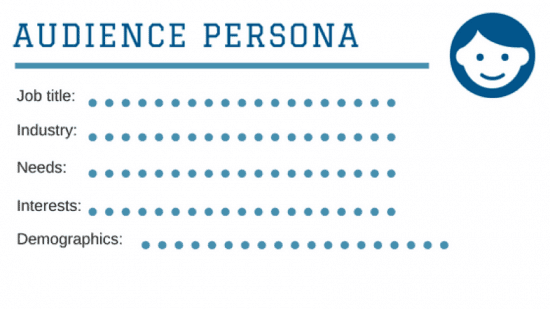Content marketing is a complex, highly competitive marketing practice, so it’s important to be strategic if you want to succeed
Over years of blogging and working with content marketing, I’ve learned a lot of lessons. Important lessons that I definitely wished I knew about when I started. In this blog post, I’m going to share top essential content marketing practices that you might not be leveraging:
- Strategize and plan your content marketing
- Research your content and perform keyword research
- Focus more on evergreen content
- The future is in personalization: create audience personas
- Use your analytics to optimise your content
Strategize and plan your content marketing
How much thought do you really put into your strategy? Are you:
- Setting objectives for your content?
- Creating content with your objectives in mind?
- Creating content based on market research?
- Using an editorial calendar to plan and strategize your content?
Creating a content marketing strategy helps in several ways: it saves you time and money, keeps you more organised, but most importantly, it allows you to be more strategic about your content so that you can constantly grow and improve.
The absolute most important step is setting your objectives. What exactly do you want to achieve with your content?
- More leads?
- More traffic to your business website?
- More conversions and sales?
- Improves SEO?
This is extremely important because your goals should reflect your entire content marketing strategy. While an opinion blog post on a piece of breaking news from your industry can get you a lot of traffic, it won’t generate you leads or help you make more sales. And likewise, if you’re creating a webinar, you most likely won’t get much traffic out of it – but you’ll get more leads and conversions.
Once you know what your goals are, you can focus exclusively on creating the types of content that will help you achieve those goals – and that is what makes content marketing strategies so incredibly important.
Use the SMART method (specific, measurable, attainable, relevant, and timely) to come up with one (or several) content marketing objectives and then get the team together to discuss the best types of content that will help you achieve these results.
Using this, you can then put together a content marketing calendar, build specifically to reflect these goals.
Research your content and perform keyword research
Whatever your goal may be, another very important aspect of content marketing good practices, is content research.
Because while you might think you know what your audience wants to read, see, or hear, chances are, you’re probably wrong.
By performing content research, you can learn:
- What forms of content are most popular in your niche (blog posts, how to guides, infographics, videos, etc.)
- What topics get the most shares/traffic: what niche subjects does your audience want to learn more about?
- What makes a great piece of content: how long it should be, what types of headlines work
If you use content marketing in any way, content research should be an on-going practice. Use apps like Feedly and Flipboard to sign up to different publications in your industry and discover other sources, so you can follow the latest content being shared.
Furthermore, use content research tools like Social Animal and Buzzsumo to help you perform more detailed research on the content being shared in your niche.
Another very important aspect is using keyword research to not only learn what topics your audience wants to learn more about, but also so you can boost your SEO and search engine ranking:
- Make a starting list of keywords relevant to what you’re promoting/your niche
- Look up these keywords using a keyword research tool and find out what long-tail keywords your audience are using, as well as get keyword suggestions
- Look up what keywords your competitors are ranking for and which keywords get them more traffic
- Use these keywords in your content
Use a tool like Ubersuggest (it’s free and you don’t need to log in, and unlike Google Keyword Planner it’s not just about advertising keywords) to look up keywords and find out what your audience is searching for:

Focus more on evergreen content
Timely content is great for getting a big boost in traffic right after publishing (like breaking news or opinion articles about different news) but it won’t get you results in the long run. Evergreen content, on the other hand:
- Provides a lot of value to audiences
- Keeps driving traffic to your website months and even years after publishing (but you also need to continue to promote it regularly as well)
- Is very valuable SEO-wise – there’s a much bigger chance you’ll rank higher up for a piece of content that is relevant for months/years
And not to mention, it saves you time. While evergreen content usually takes longer to produce than a regular blog post, for example, in the end, it saves you a lot of time because you won’t need to create new content as often, and all you need to do to keep it relevant is to update it when needed.
Here are some of the best types of evergreen content that you can create:
- How to guides (on your blog, as a resource on your website, or as gated content): for beginners, advanced users, and everything in between, depending on your audience
- Presentations
- Templates
- Checklists
- Swipe files
- Listicles
- Tips and hacks
- Case studies
- Statistics and research papers
- Podcasts
The future is in personalization: create audience personas
Personalization is becoming more and more important in marketing. Because there is so much content and there are so many ads, people learn to block out things that aren’t relevant to them. So if you want to catch your audiences’ attention and get them open and read your emails, visit your blog, and check out your content, you need to create content specifically for them.
One of the best ways to achieve this is to create audience personas for all the different types of audiences that you’re targeting (not just one persona to cover them all):

It’s up to you – and your audience – to determine which factors are most important when differentiating between different audience personas. It can be their age, for example, which is also likely to affect their needs and interests or it can be something like their location if you’re operating in different countries or cities.
Based on these personas (and your content marketing objectives), you can then start creating content specifically for them. This will ensure that you’re offering highly relevant content for all the different members of your audience, thus helping you improve open and click-through rates for emails, your traffic, your SEO, and your lead generation and conversion rates.
Use your analytics to optimize your content
Earlier, I talked about content research and how important it is to help you identify trends amongst your audience and to help you understand what types of content and topics work best.
And as you start publishing as well, you can do the same with your own content:
- Which content gets the most traffic?
- Which gets the most social media shares?
- Which gets the least traffic/social media shares?
- Which content converted the best?
- Which headlines get the most clicks?
What are the common threads between your most successful content? Likewise, what are the common threads among your least successful content?
There is so much that you can learn about your audience this way and use it to optimize and improve your content marketing strategy.
However, you should also keep in mind your content marketing objectives to help you make better decisions about what types of content to focus on/forget about. For example, if your goal is to improve lead generation, it’s great that a post got you a lot of traffic, but if that traffic left your website and never came back or if they haven’t taken any action on your website, then that content hasn’t done its job and you should try different options.
However, by identifying your top-performing content based on your content marketing objectives, you can create more content in the same vein (either about the same topics, or in the same content format) to try to replicate that success.
Conclusion
The absolute best way to be successful at content marketing (apart from creating high-quality content, of course) is to be strategic. What this means is, you need to:
- Set objectives for yourself
- Perform more research: understand your audience, create audience personas, understand what topics are relevant to your audience, perform keyword research, and so on
- Learn from your wins and losses to improve your strategy on the go
What are some of the most important content marketing lessons you’ve learned?








